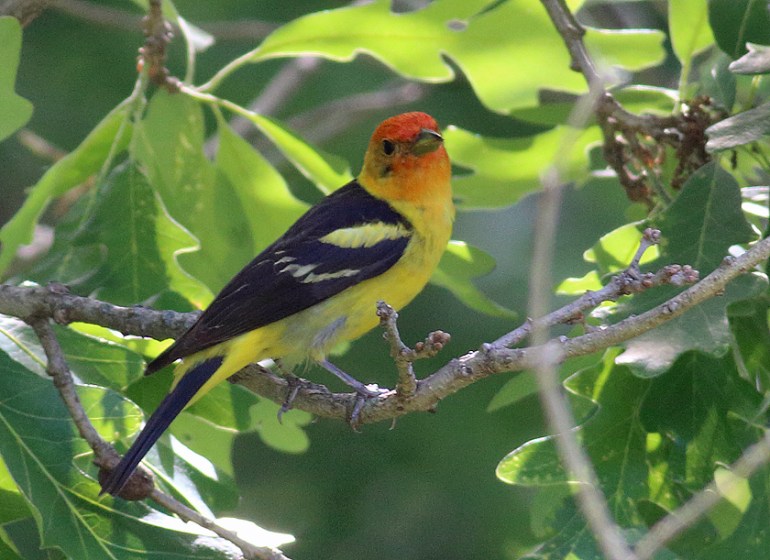I’ve had a kayak for about 8 years. The first one I bought was a rather large sit-on-top kayak, a pretty upscale one with an number of bells and whistles that made it perfect for fishing. I immediately fell in love with the freedom you felt while kayaking. As a sit on top, you’re pretty exposed, but that just added to the thrill.
After a couple of trial runs, I decided to head up to Lake Thompson in Kingsbury County, the largest natural lake in South Dakota. I was feeling confident! I had no issues in my initial runs, so when arriving at Lake Thompson I was determined to paddle the length of the lake (5 miles or so). It was a beautiful day…a few puffy clouds, very light winds, perfect for kayaking. Even with a light wind, there was a bit of a chop out in the open water, but I had no problems making it across the lake. I was using muscles I hadn’t used in such a way and was a bit tired, so rested on the opposite shore for a bit before heading back.
The way back was a bit harder. The wind had picked up, the chop had picked up, and I was tired. Still, I was progressing well, and was halfway across when….disaster strikes. There were a few fishermen out on the lake, and I saw one heading across the lake at pretty high speed. He did see me and avoided my position, but he didn’t slow down as he sped past about 20 yards away. I soon realized this might be trouble, as the wake waves quickly headed my way. I tried to turn my kayak into the wave, but was perhaps at a 45-degree angle when the first wave hit. I rocked with it, leaned in the direction of the wave to balance the tipping kayak, and was initially OK…until the second wave hit. Again I didn’t have time to get the kayak headed into the wave, and when the second wave hit I was unable to keep the balance. Into the water I went.
OK…no problem…I’m in the middle of the largest natural lake in South Dakota, but 1) the water was warm (it’s late August), and 2) I had on my life jacket. I thought it would be no problem getting back on top and finishing the trip back, but I just…couldn’t…do it. I’d READ about what to do if capsized in my sit-on-top…reaching across the kayak, grabbing the opposite side and pulling yourself up…but when push came to shove, I couldn’t do it. The first few times I tried, when I reached across and grabbed the opposite side, the kayak would simply flip and turn over. It was such a buoyant, high-sittingkayak, and no matter my strategy I couldn’t get back on top. It didn’t help that I was tired from the long, hard paddle, and soon I realized I wasn’t going to be able to get back up. I still wasn’t too concerned. The wind was blowing towards my push-off point, so I thought I’d just swim and drift with the kayak back to my car. It was a long haul. Trying to swim with the kayak in tow was complicated by an increasing wind that seemed determined to push me off course. Finally I just decided I needed to head to the closest, easily accessed shore rather than going across. Exhausted, I pulled myself up, tied up the kayak, and rested for a while before trekking back to retrieve the car.
That’s a VERY long back drop to my mindset when it comes to taking my very expensive Canon camera equipment out in the kayak. Thankfully that day I wasn’t fishing, I wasn’t taking photos, so I didn’t lose any thing when I capsized (other than a water bottle), but the thought of tipping with my camera equipment has always made me a bit leery about trying to use my kayak as a photo platform. However, I thought I’d try taking my 2nd kayak (a very stable high-end, 2-person inflatable that I will take out with my son) out on Lake Vermilion, a rather large reservoir west of Sioux Falls. It was a nice sunny morning with relatively low wind, but even so, I was paranoid about losing my equipment, and kept my camera equipment in a dry bag until needed! It’s not the greatest photography strategy in the world, as you’re fumbling for access to your equipment if you unexpectedly come across a bird, but at least I felt safe and secure.
It wasn’t a great day in terms of the birding. I didn’t really come across any waterfowl, and other than some far away American White Pelicans and some flocks of Franklin’s Gulls that would occasionally stream overhead, it was pretty quiet. However, when returning to my push off point, I spotted a Great Blue Heron prowling the shoreline. I kept my distance for a while, and was rewarded when he plunged his head down and caught a large bullhead catfish. I missed the moment of the catch, but was able to grab a number of photos as he took off with his catch and slowly flew across the lake right in front of the kayak.
I can definitely see the advantages of shooting from the kayak You can get to locations you simply can’t get to by foot, and when you’re sitting right on the water, you can get some wonderful, low-angle, natural looking shots. I love the photos here of the Great Blue Heron. After my one “dunking” incident, however, I’m still leery of doing this on a regular basis! With winter approaching, South Dakota’s climate will soon make the choice easy, but hopefully I can get back out in the kayak with the camera one or two more times before the cold weather hits.

















